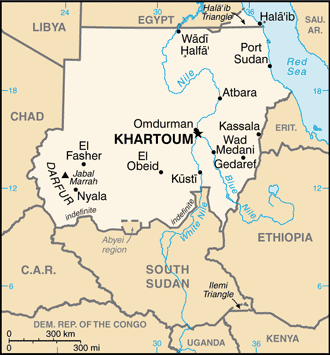The Greater Horn of Africa
For the purpose of our activities, the Horn of Africa is Ethiopia, Somalia, Sudan, South Sudan, Djibouti and Eritrea, with a total population of 106 Million and total area of 4.5 million sq km. The greater Horn of Africa would add Kenya and Uganda to the 5 countries of the Horn. In this region, SSC covers activities in Governance, Civil Society, Conflict Mapping and Mitigation, Market Surveys, Privatization, Political Analysis, Training and Water Resources |
|

|